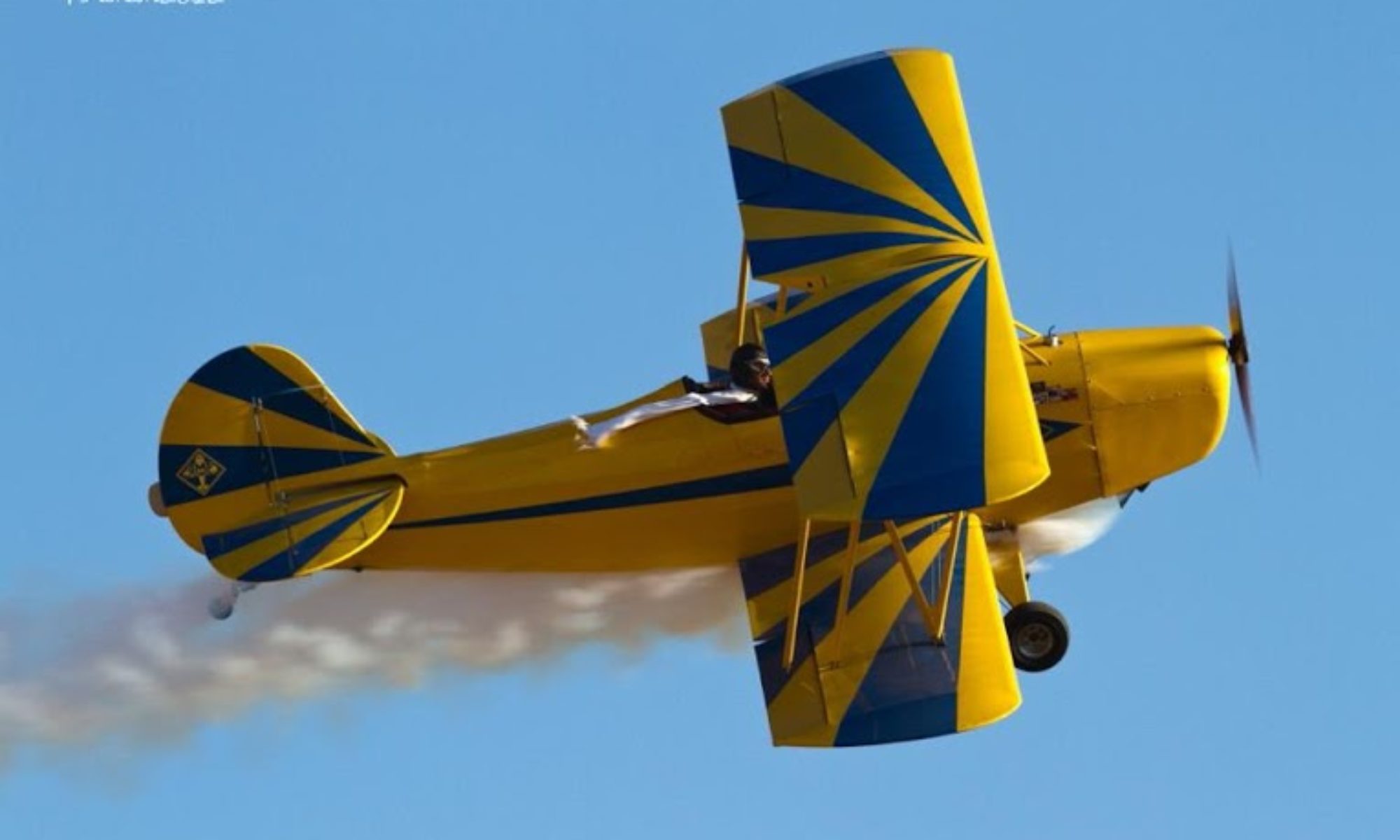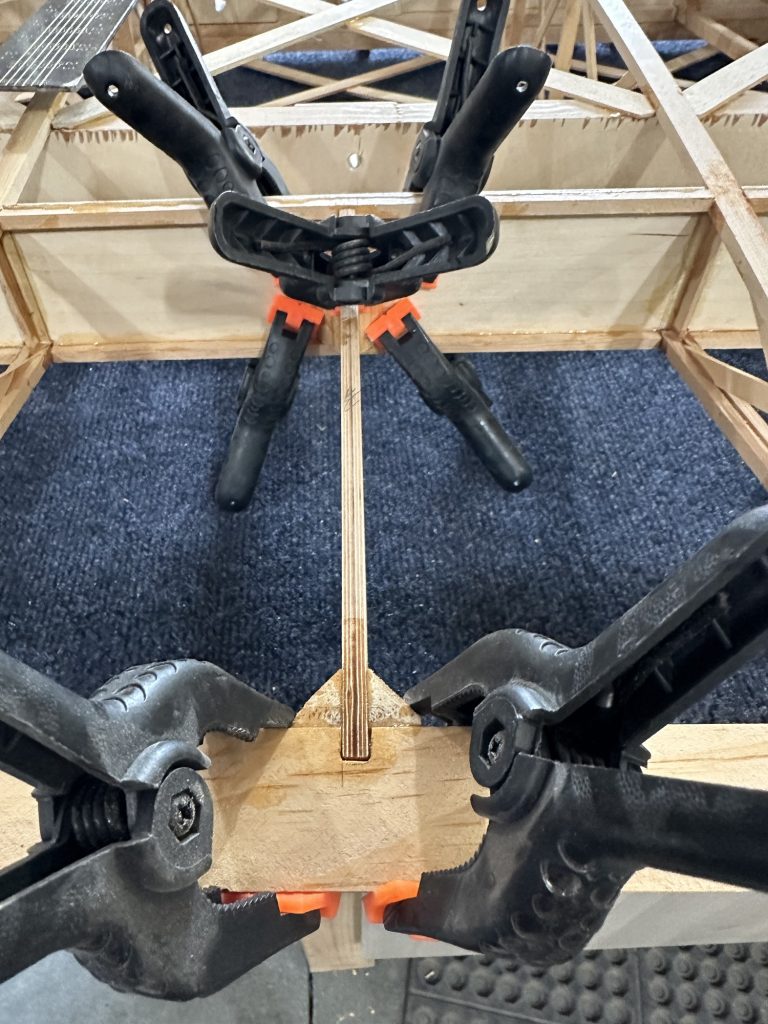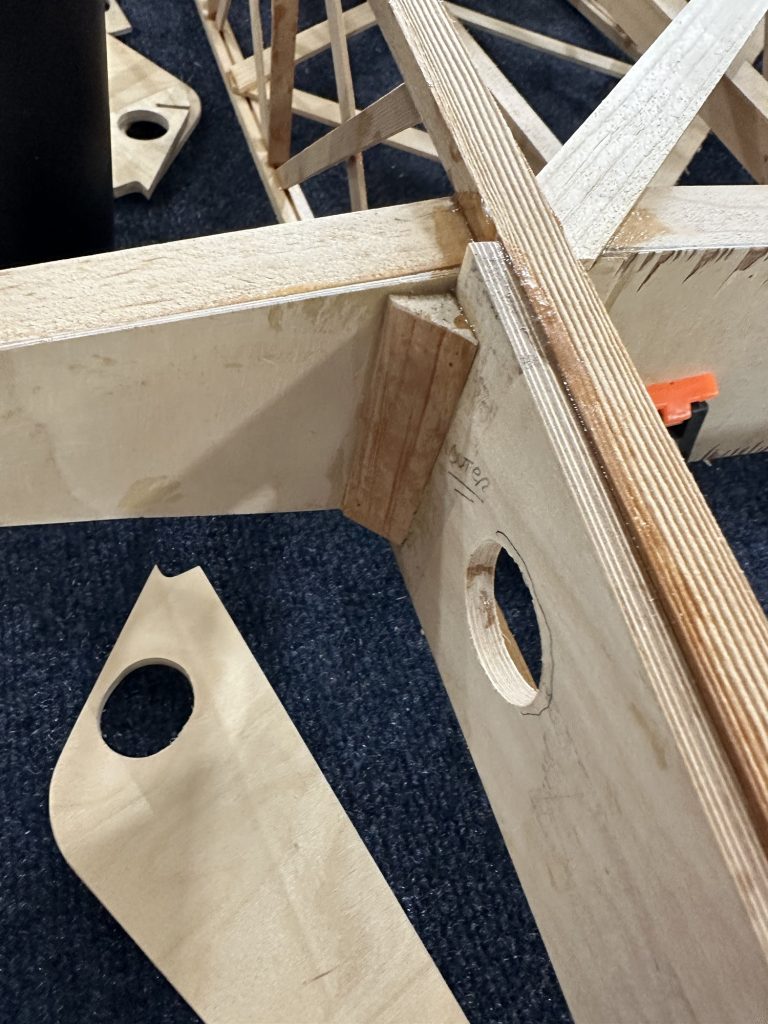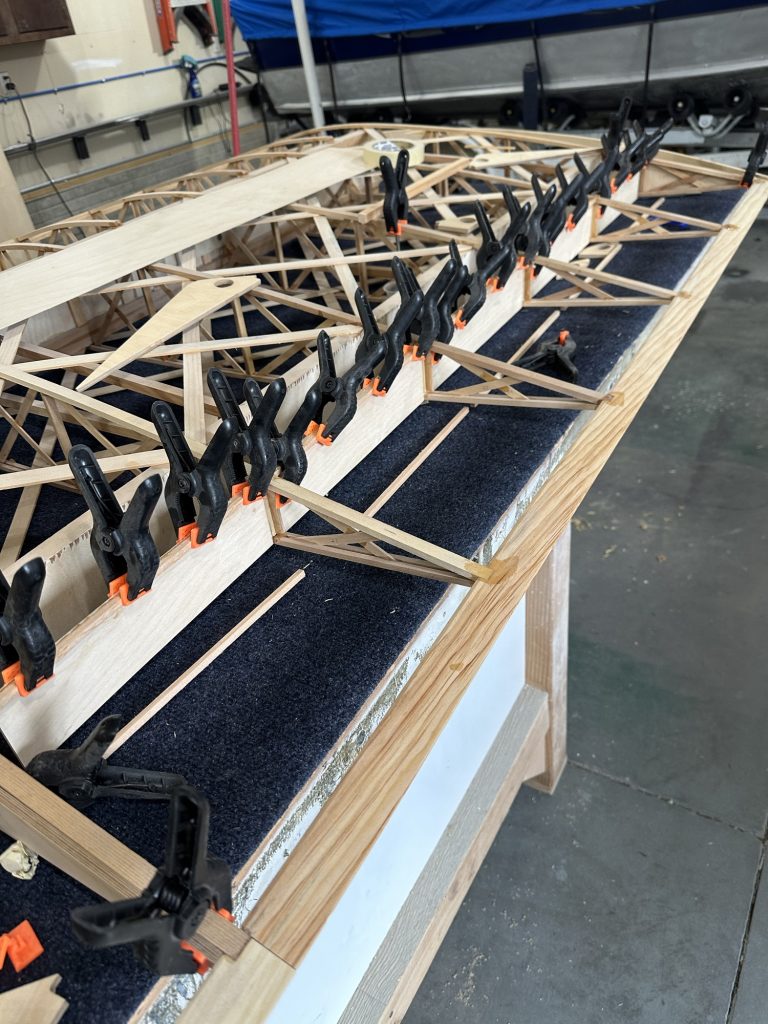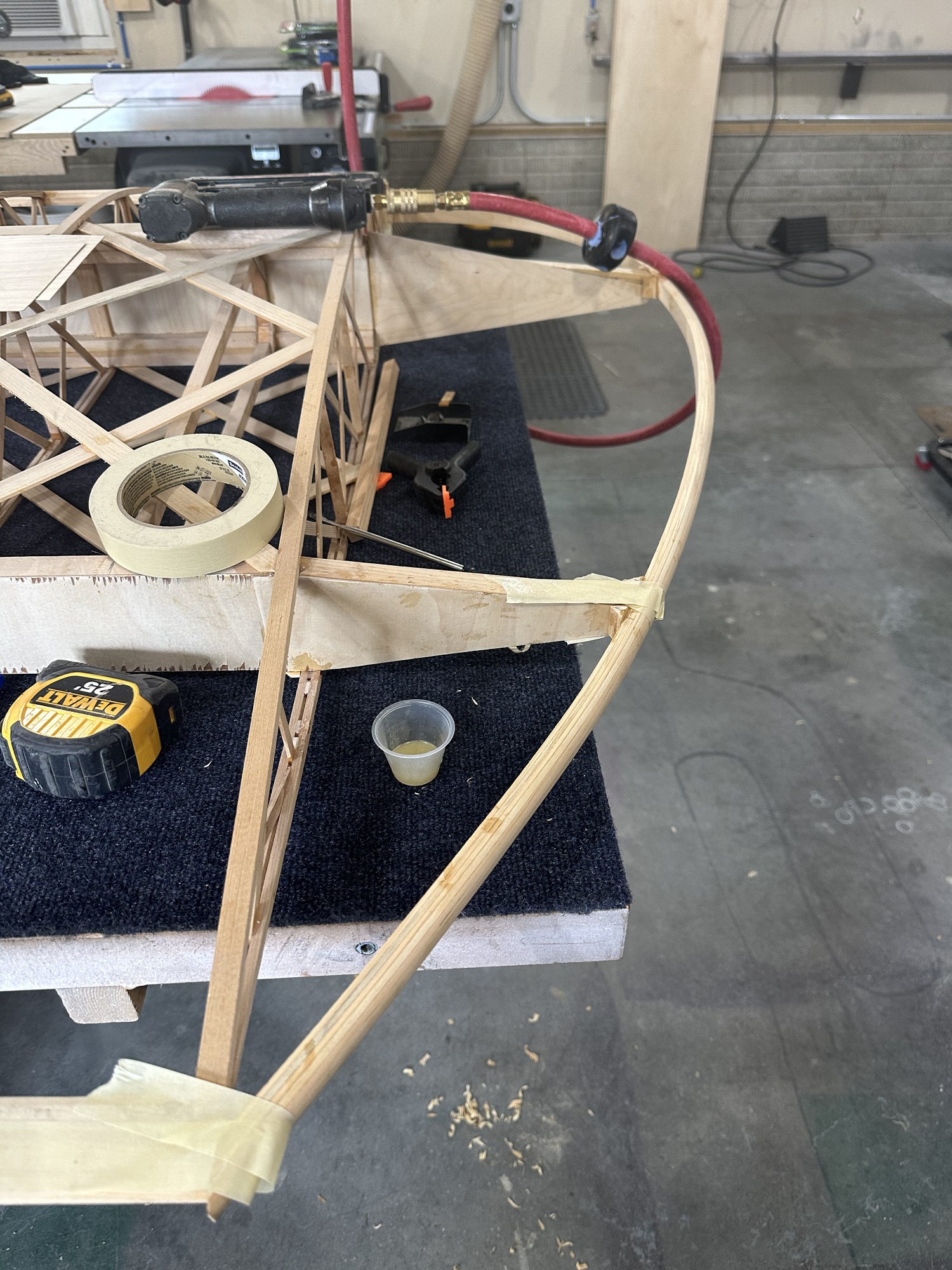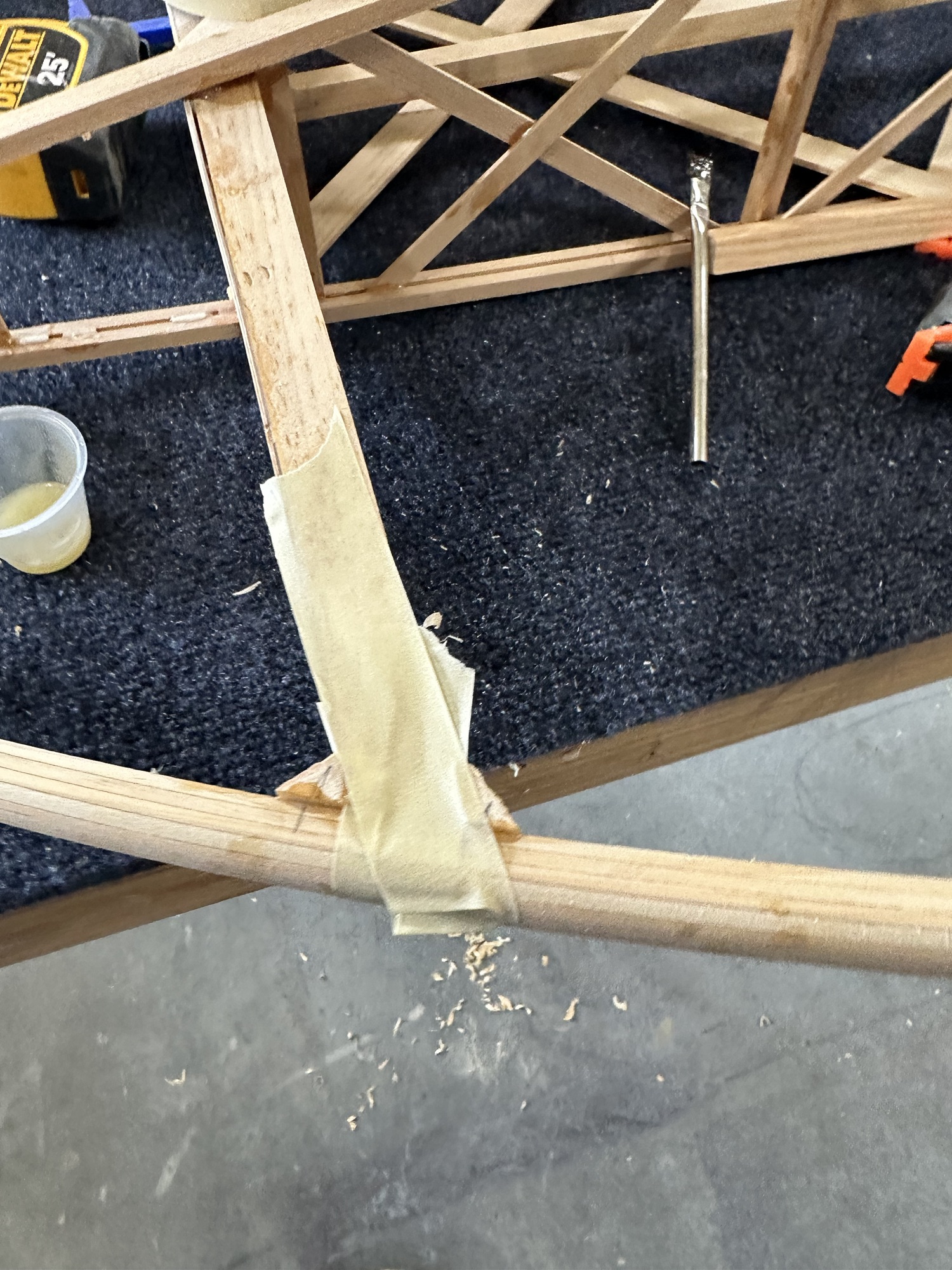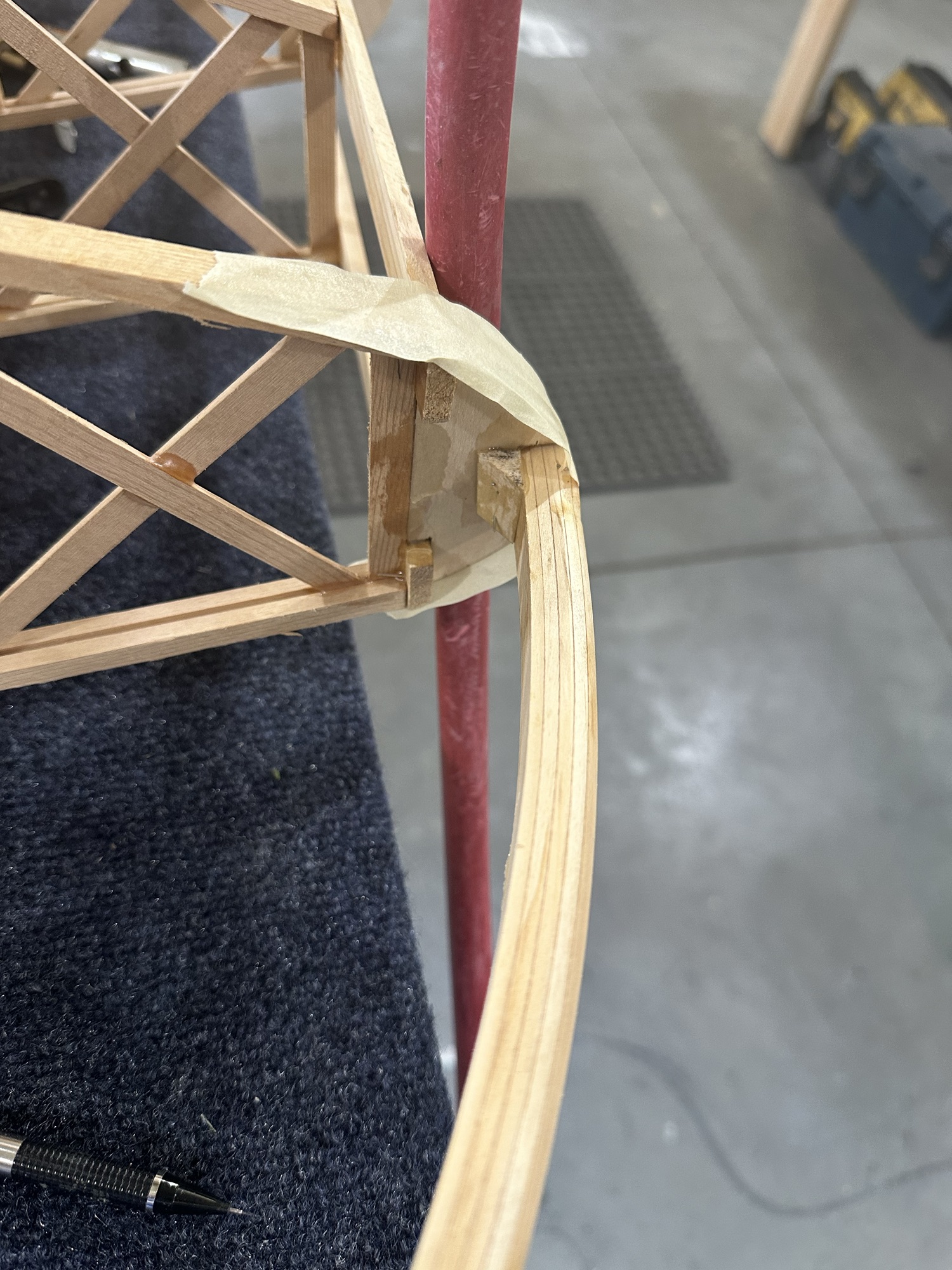Wednesday afternoon I went over and worked with Stu to get the wing down off the rack and onto the bench. I grabbed the nose ribs and, since they weren’t cut out for the false spars, took them home with me. Before I did, I carefully marked where they need to be notched.
Stu has gotten out of the cabinet business and has sold off much of his wood shop equipment. The thickness planer, jointer, band saw, edge banding machine, and some other stuff is gone. Wait — the band saw is gone? Crap, if I’d known I’d have bought it from him on condition that I could leave it where it was. Oh well. I have one at home, a cheap little 10″ tabletop model.
While cutting the notches in the nose ribs, it was immediately apparent that the saw blade was toast. I’d wanted to replace it anyway, as it’s a 1/4″ wide blade and not really great for keeping a straight line. I removed and measured it, then tossed that and the equally worn out metal blade I had for it that couldn’t make it through 1/8″ 6061. I ordered a 62″ x 3/8″ x 6 TPI wood blade, a 10 TPI wood blade, and a 1/2″ wide 24 tooth metal cutting blade.
A few days’ delay was inserted here, while dealing with another issue unrelated to the airplane..
The blades arrived over the past few days. I put the 6-tooth wood cutting blade on and got the saw adjusted’ it works great. I can cut a 1/16 slice off the end of a 2×2. I think I still need to get the saw table squared up a little better with the blade before trying to do any re-sawing, but it’s close enough for the time being. The metal cutting blade slides through that 6061 like butter, so I’ll be able to finish off the AL fittings for the wing and get the tubing cut for the bushings. Then I can order the bolts I need and get the fittings installed.
